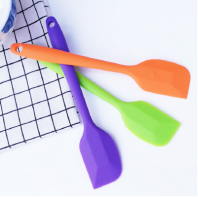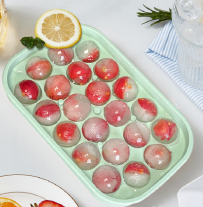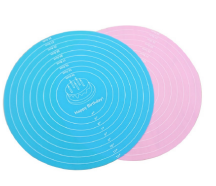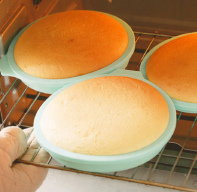실리콘은 많은 산업에서 중요한 역할을하는 엄청나게 다재다능한 재료입니다.. 유연성 덕분에, 내열, 화학적 안정성, 그리고 내구성, 의료 기기에서 산업 장비 및 일상 소비자 제품에 이르기까지 모든 것에 널리 사용됩니다.. 하지만, 모든 실리콘이 동일하지는 않습니다.이 유형은 특정 요구 사항을 충족하도록 특별히 설계되었습니다., 각각 고유 한 혜택을 제공합니다.
이 기사에서, 우리는 4 가지 주요 유형의 실리콘 고무를 자세히 살펴볼 것입니다., 그들의 구성을 설명합니다, 주요 기능, 그리고 일반적인 응용 프로그램. 또한 강점과 한계를 비교할 것입니다, 다른 목적에 가장 적합한 유형을 이해하도록 돕습니다..

4 실리콘의 유형과 그 차이
유형 1: 액체 실리콘고무 (LSR)
액체 실리콘고무 (LSR) 가공되기 전에 액체 형태로 남아있는 2 부분으로 된 백금 단단 실리콘입니다.. 우수한 유량 특성은 사출 성형에 이상적입니다., 매우 상세하고 정확한 부품의 생산을 가능하게합니다. LSR은 생체 적합성으로 널리 인식됩니다, 의료 및 식품 등급 응용 프로그램에 선호하는 선택으로. 전통적인 실리콘 고무와 달리, 부산물을 해제하지 않고 LSR 치료, 순도와 안전 보장.
주요 기능:
- 높은 정밀 성형 성형 기능
- 우수한 열 안정성 (-50° C ~ 250 ° C)
- UV 방사선 및 가혹한 환경 조건에 저항합니다
- 생체 적합성 및 비 독성
일반적인 응용:
- 의료 임플란트 및 튜브
- 젖꼭지 및 병 젖꼭지와 같은 베이비 제품
- 고성능 개스킷 및 물개
- 소비자 전자 및 웨어러블

유형 2: 높은 일관성 고무 (HCR)
높은 일관성 고무 (HCR), 단단한 실리콘 고무 또는 껌 스톡이라고도합니다., 더 두껍습니다, 퍼티와 같은 일관성. 고 분자량 폴리 실록산 사슬로 구성되며 압축 또는 압출 성형을 통해 처리 될 수 있습니다.. HCR은 내구성이 뛰어나고 극한 온도를 견딜 수 있습니다, 산업 및 소비자 응용 프로그램에 적합합니다. 일반적으로 과산화물 또는 백금 기반 경화 시스템을 사용하여 경화됩니다., 후자는 더 깨끗한 경화 과정을 제공합니다.
주요 기능:
- 뛰어난 기계적 강도와 유연성
- 고온 응용에 적합합니다 (최대 300 ° C)
- 강화 된 특성을 위해 필러로 사용자 정의 할 수 있습니다
- 장기 내구성과 안정성
일반적인 응용:
- 자동차 엔진 구성 요소
- 의료 장기 임플란트
- 전기 절연 재료
- 조리기구 및 베이크웨어와 같은 소비자 제품

유형 3: 실내 온도 가상화 실리콘 (RTV)
실내 온도가 저렴합니다 (RTV) 실리콘은 추가 열이 필요없이 주변 온도에서 치료하는 실리콘 고무의 한 종류. RTV 실리콘은 두 가지 주요 형태로 제공됩니다: 하나의 구성 요소 (RTV-1) 그리고 2 성분 (RTV-2). RTV-1은 공기 중에 수분과 반응하여 치료됩니다, RTV-2는 사용하기 전에 혼합이 필요합니다. 적용의 용이성과 다양성으로 인해, RTV 실리콘은 밀봉에 널리 사용됩니다, 본딩, 성형 응용 프로그램.
주요 기능:
- 추가 열이없이 실온에서 치료됩니다
- 다양한 기판에 대한 우수한 접착
- 물에 대한 저항성을 제공합니다, 화학, 그리고 극한의 온도
- Flexible로 제공됩니다, 반 강성, 그리고 엄격한 형태
일반적인 응용:
- 건설 및 자동차 산업을위한 접착제 및 실란트
- 곰팡이 만들기 및 프로토 타이핑
- 전기 포팅 및 단열재
- DIY 및 가정 수리 제품

유형 4: 플루오로실리콘 (FVMQ)
플루오로 실리 콘, 오일에 대한 저항성을 향상시킵니다, 연료, 가혹한 화학 물질. 표준 실리콘의 유리한 특성을 많이 보유하고 있습니다., 유연성 및 온도 안정성과 같은, 우수한 화학 저항성을 제공합니다, 까다로운 산업 응용 프로그램에 필수 불가결 한.
주요 기능:
- 연료에 대한 탁월한 저항, 유화, 및 용제
- 고온 성능 (-60° C ~ 250 ° C)
- 가혹한 환경에서 유연성과 내구성을 유지합니다
- 강화 된 특성으로 인해 기존 실리콘보다 비싸다
일반적인 응용:
- 항공 우주 및 항공 연료 시스템
- 자동차 개스킷 및 O- 링
- 산업 물개 및 호스
- 화학 저항을위한 특수 코팅

비교 4 실리콘의 유형
| 재산 | LSR | HCR | RTV | 플루오로실리콘 |
| 처리 방법 | 사출 성형 | 압축/압출 성형 | 자기 조정 (1-부분) 또는 혼합 (2-부분) | 압축/압출 성형 |
| 경화 유형 | 백금 공제 | 과산화물 또는 백금-단일 | 방 온도 경화 | 백금 공제 |
| 내열 | 훌륭한 | 훌륭한 | 좋은 | 훌륭한 |
| 화학적 내성 | 보통의 | 보통의 | 보통의 | 뛰어난 |
| 기계적 강도 | 높은 | 매우 높습니다 | 보통의 | 높은 |
| 유연성 | 높은 | 보통의 | 높은 | 보통의 |
| 일반적인 응용 | 의료, 아기 제품, 전자 제품 | 자동차, 의료 임플란트, 조리기구 | 접착제, 곰팡이 제작, 봉인 | 항공 우주, 자동차, 산업 응용 분야 |
실리콘을 선택할 때 추가 고려 사항
실리콘의 네 가지 주요 유형을 넘어서, 다른 요인들은 특정 응용 프로그램에 대한 자료 선택에 영향을 미칩니다.. 여기에는 다음이 포함됩니다.:
실리콘 형태
실리콘은 다양한 형태로 가공 될 수 있습니다, 포함:
- 에멀젼: 코팅에 사용됩니다, 릴리스 에이전트, 및 윤활제.
- 유화: 유압 유체 및 윤활제로 적용됩니다.
- 젤: 의료 및 미용 응용에 일반적으로 사용됩니다.
- 거품: 개스킷에서 발견되었습니다, 격리, 쿠션 응용 분야.
- 그리스: 고온 윤활 및 전기 절연에 사용됩니다.
- 수지: 접착제에서 발견됩니다, 그림 물감, 보호 코팅.
고성능 응용 분야의 실리콘
실리콘의 고유 한 특성은 전문 산업에 적합합니다, 포함:
- 의료 & 의료: 보철물에 사용됩니다, 임플란트, 및 생체 적합성 튜브.
- 자동차 & 항공 우주: 개스킷에 필수적입니다, 물개, 연료 내성 구성 요소.
- 전자제품 & 전기 절연: 케이블의 안정성을 제공합니다, 커넥터, 그리고 화합물 화합물.
- 음식 & 소비재: 주방 용품에서 발견됩니다, 아기 제품, 및 방수 코팅.

결론
실리콘 고무는 산업 전반에 걸쳐 다양한 응용 프로그램을 갖춘 놀라운 재료입니다.. 4 가지 주요 유형 인 액체 실리콘 고무 (LSR), 높은 일관성 고무 (HCR), 실내 온도 가상화 실리콘 (RTV), 플루오로 실리콘 - 각은 뚜렷한 장점과 특수 특성을 제공합니다. 높은 정밀 성형이 필요한지 여부, 극한 온도 저항, 화학적 내구성, 또는 쉬운 응용 프로그램, 올바른 유형의 실리콘을 선택하는 것은 모든 애플리케이션에서 최적의 성능을 보장하는 데 중요합니다..
이러한 차이점을 이해하고 특정 요구를 평가함으로써, 제품 개발 및 제조 요구 사항에 가장 적합한 실리콘 유형을 선택할 수 있습니다.. 고성능 재료에 대한 수요가 증가함에 따라, 실리콘은 현대 산업의 혁신과 발전을위한 중요한 솔루션으로 남아 있습니다..